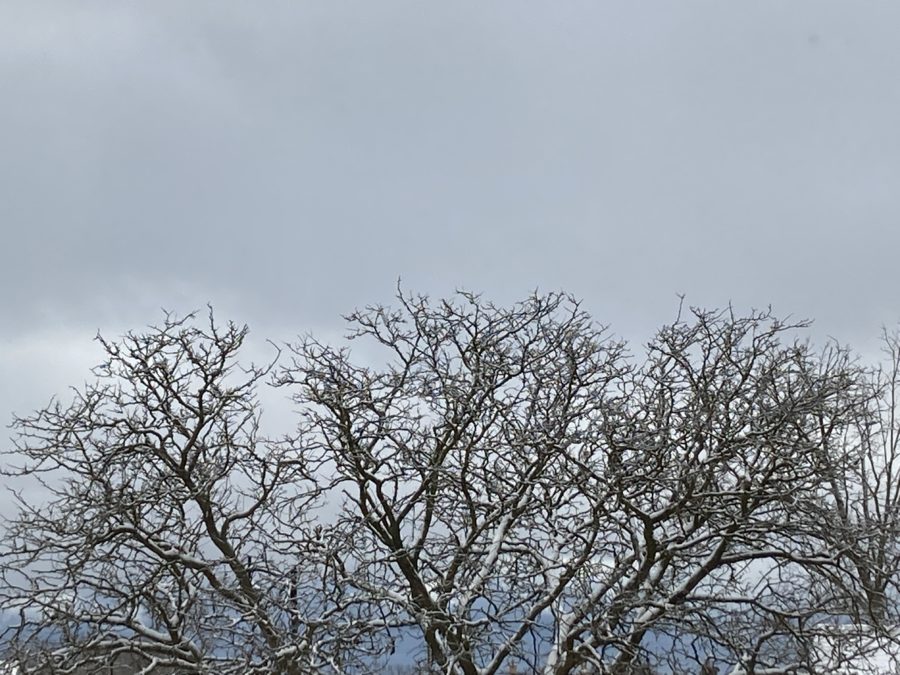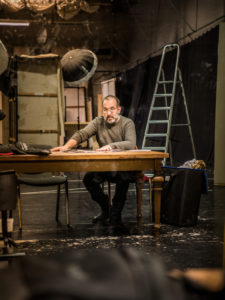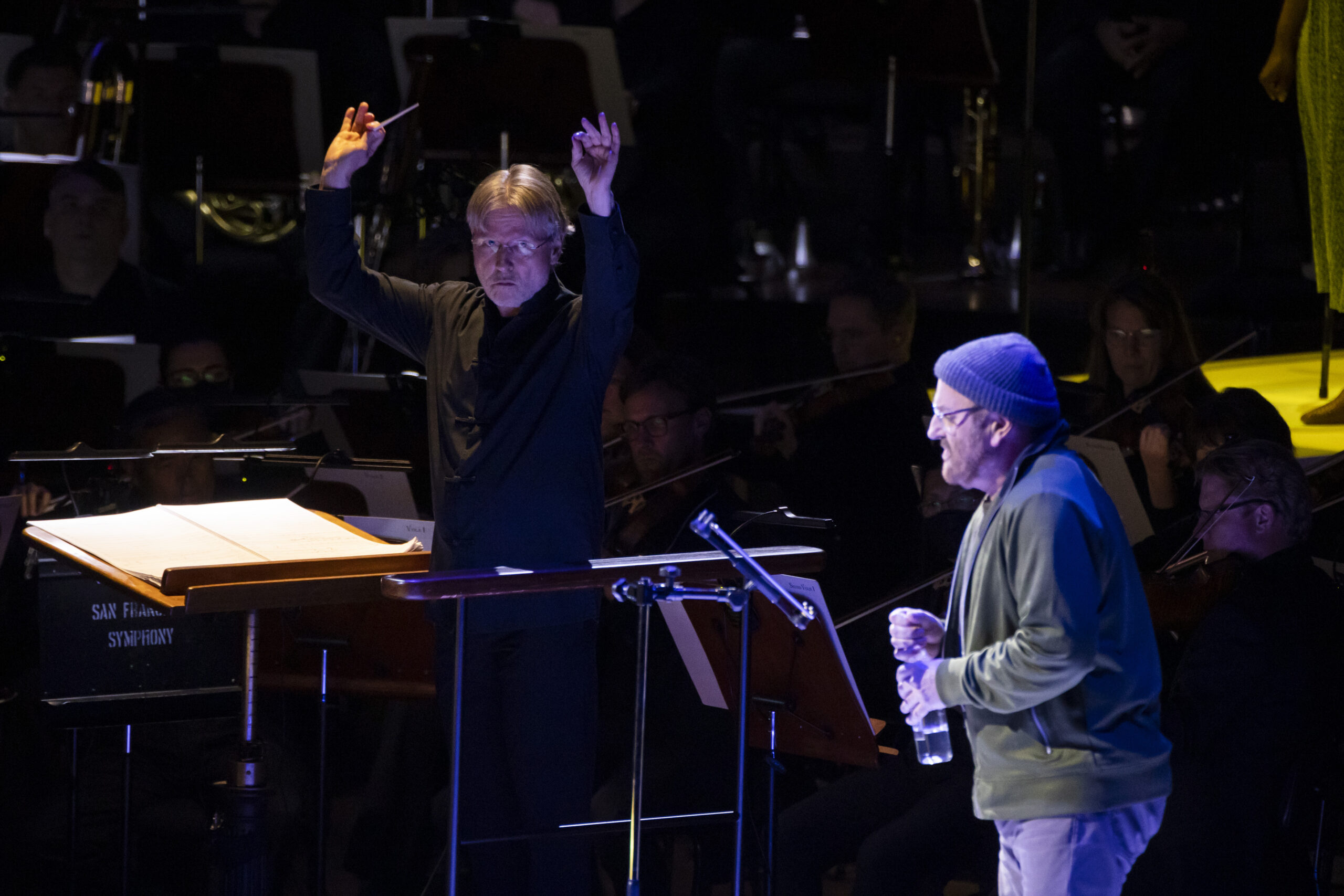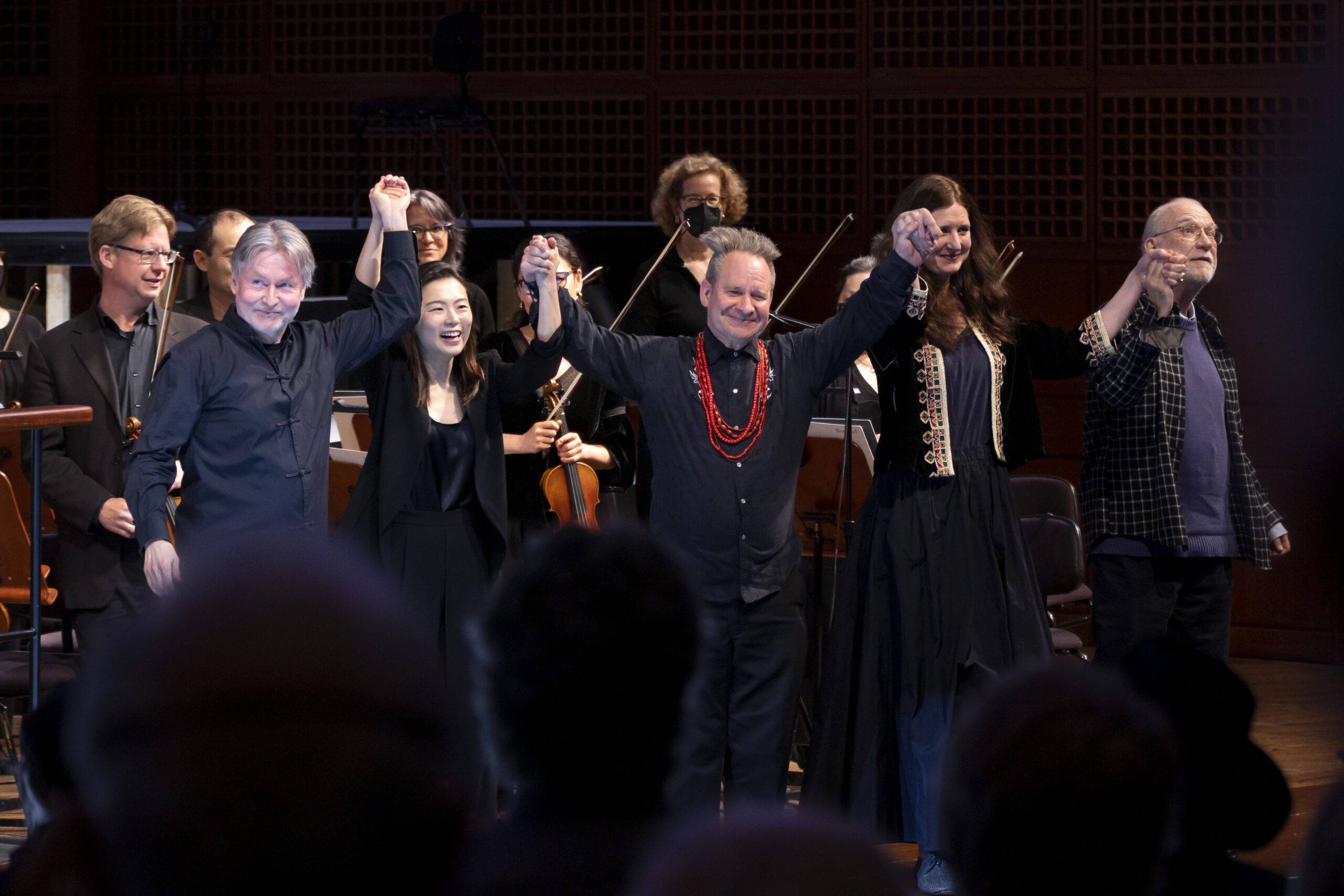Search results: "opera" Page 3 of 28
 |
| David Pomeroy and Krisztina Szabo in Tap:Ex Metallurgy. Photo by Dahlia Katz |
Amidst the many serious features and interviews I’ve done lately, it came as something of a pleasant surprise to be reminded of the very real importance of play — even when the notion comes wrapped in some challenging dressing.
The occasion was a creative collaboration between Canadian punk band Fucked Up and Toronto-based opera company Tapestry, which specializes in new works. Following previous collaborations involving electronics and Maria Callas, as well as a daring re-envisioning of the Medea myth this past summer, Tapestry have demonstrated they aren’t exactly shy when it comes to pushing the boundaries of opera as an artistic form. Artistic Director Michael Mori has ably, creatively demonstrated his commitment to moving opera into the 21st century, in both subtle and not-so-subtle ways; a recent fundraiser for the company featured a mix of Mozart and contemporary composers, while their latest work, which paired members of Fucked Up with mezzo-soprano Krisztina Szabo and tenor David Pomeroy, conveyed a clear desire to challenge audiences in big ways.
Tap: Ex Metallurgy, as the evening was called, was staged at the company’s homebase for operations, located in Toronto’s historic Distillery District. Amidst the rumble of not-so-distant commuter trains and the din of highway traffic, the evening’s first half unfolded as a kind of meditation on loss, with Szabo and Pomeroy singing the roles of two parents grieving the recent loss of a child. A deeply theatrical work staged with elegant economy, Jonah Falco’s music and a libretto by Mike Haliechuk and David Hames Brock offered a heart-full take on a painful subject. Production designer David DeGrow’s lighting, a panoply of strong, changing colors, conveyed more than mere mood, but painted a psychological portrait of suffering, in all its myriad forms, while Mori’s simple, powerful staging featured musicians assembled onstage leaving, one by one, until the only two figures left, Szabo and violinist Yoobin Ahn, performed a kind of conversational duet that ended in quiet grace.
 |
| Fucked Up’s Mike Haliechuk in Tap: Ex Metallurgy. Photo by Dahlia Katz |
It was hardly the stuff one associates with the bald aggression of punk, but the contrast between the actual experience and the perceived cliche was powerful, and the experimentation behind it was a thoughtful sort of playfulness that forced one to re-think boundaries between musical genres. Haliechuk’s guitar effects had a kind of loud if soothing effect that was both ethereal and grounding at once — kind of like the best-sung opera arias.
The meditative nature of Metallurgy‘s first half contrasted nicely with the evening’s altogether lighter second half, which featured Szabo and Pomeroy playing out the various stages of a relationship. At one point the tenor even offered his own unique take on Led Zeppelin’s “Whole Lotta Love”, complete with impressive solo on a flying V guitar placed nearby. There was something so refreshing, so powerful, so gorgeously alive about the simple if highly effective (and entertaining) portrayal of the work’s “love-at-first-sight-over-a-lifetime” theme, one that lent itself nicely to operatic expression. The work, by librettist David James Brock and music by Ivan Barbotin, neatly captured the intense ups, depressive lows, and inevitable mediocrities of a long-term relationship with grace, power, and a stylish staging that made nice use of the electric chemistry between Pomeroy and Szabo. The maniacal grin on Pomeroy’s face as he wailed on guitar offered a hilariously bald contrast to Szabo’s patient, amused/unamused expression, and the air was deliciously electric with a crackling audience excitement feeding off this interaction. Between this moment and the big. bold very punk-like sounds of Fucked Up members Jonah Falco, Mike Haliechuk and Josh Zucker, one could almost hear audience thoughts: this is opera? YESSSS!
As a disco ball spun overhead and the small, packed space filled with a million little shiny beads of light, I couldn’t help but marvel at the importance of play in opera; maybe the medium needs more of it, more than ever. opera really isn’t as poe-faced as everyone thinks it is — especially to those who work closely within or beside it. Sometimes it takes a punk band to bring that playfulness out, but the willingness has to already exist. The joyous moments of musical playfulness, whether actualized by kicking down musical boundaries or offering moments of audio abandon, feel too few and far-between, and really, that doesn’t need to be the norm in an artform as inherently theatrical and dynamic as opera. Thanks to Tapestry for pressing “play” — and really, really meaning it, maaaan.

There’s a simultaneous abundance and lack to summer. Yes, there’s light and heat, but lately I can be found working (or trying to work) in a darkened kitchen – barefoot, makeup free, messy-haired – listening intently to live broadcasts from Bayreuth, occasionally glancing through blinds to a barely-green garden and rows of sleepy doves parked in the shade. One feels guilty trying to hasten an end to summer’s pleasanter aspects (cerulean skies, reasonable warmth, scant clothing) – but oh, the autumn, with its jewel-like colours, cool days, cooler nights, its promise of structure through the coming months – they are not only welcome but greatly anticipated. The start of the 2024-2025 classical/opera season may be a few weeks away, but they feel closer than ever. Hopefully this overdue reading list will tie my readers through the remaining weeks of summer until regular interviews return once more.
First up: the Berlin Philharmonic is back on August 23rd. This season features Wolfgang Rihm as its Composer-In-Residence. Rihm, who first worked with the orchestra in 1977, sadly passed away on July 27th; he was 72. News of his passing inspired many tributes in the German music world, including a richly detailed feature at the Berlin Phil website. Many remembrances underlined the composer’s refusal to be constrained by dogma. Artistic Director of the Lucerne Festival Academy since 2016, Rihm composed over 600 works, including a number of operas that reached well across specific genres and styes. His opera-monodrama Das Gehege premiered at Bayerische Staatsoper in autumn 2006 and was later presented at La Monnaie in 2018 as part of a double bill with Luigi Dallapiccola’s Il prigioniero directed by Andrea Breth and conducted by Franck Ollu. Baritone Georg Nigl (the “prisoner” of the latter production) worked with Rihm on numerous occasions and appeared as the lead in Rihm’s one-act chamber opera Jakob Lenz (based on Georg Büchner’s 1836 novella) at La Monnaie in 2015. Nigl told BR Klassik‘s Bernhard Neuhoff recently that “Ich habe mir durch Wolfgang einen Kosmos erschlossen, der mir – wenn ich das über mich selbst so sagen darf – den Weg geebnet hat, ein künstlerisch denkender Mensch zu werden.” (“Wolfgang opened up a cosmos for me that – if I may say so about myself – paved the way for me to become an artistically minded person.”) German composer/pianist Moritz Eggert posted a touching a tribute at his website (Bad Blog of Musick) noting Rihm’s incredible prolific creativity, his support for his colleagues, and that “Herz schlug dabei stets für das Ungewöhnliche, Besondere und Unkonventionelle.” (“His heart always beat for the unusual, special and unconventional.”)
Earlier this year musician-dramaturg Arno Lücker delivered a music lecture in Vienna in which he shared his ideas behind the process of writing about 250 female composers, contemporary and historic, strictly classical and not-so-classical. His selections, published over four years by Van Musik, ended with 12th century polymath Hildegard von Bingen (Lücker chose not to hew to formalities around chronology) and included Margaret Bonds (1913-1972), Undine Smith Moore (1904-1989) and Florence Price (1887-1953). His lecture, transcribed in full at Bad Blog of Musick, concluded with a reminder of the link between education and transformation:
… make sure you include female composers in your music education formats. We can’t just tell the young people out there, for the thousandth time, how great Beethoven’s Fifth Symphony is. There is an urgent need to catch up in this area too.
(Arno Lücker, Bad Blog of Musick, 8 June 2024)
I wish he’d written a bit more on the need for a greater breadth in education (I write this as someone who examined the Ontario music education curriculum for elementary schools in detail earlier this year) – but hopefully Lücker will offer some form of follow-up.
The need to “catch up” was in my mind as I read observations by Slipped Disc founder Norman Lebrecht on the diminishing quantity (and quality) of classical coverage in The New York Times. (“The Decline and Fall Of Classical Music at The New York Times“, Slipped Disc, June 27, 2024) The traditional media (as symbolized by the NYT) once played, and still frustratingly plays, a major role in shaping public perceptions and ideas around culture, as much as shaping the industry in which it operates; coverage, criticism, and updates were all once regular features of classical news coverage. With the rise of digital much of that changed, especially in terms of the shortening of features, the hewing to algorithms, and the concern over stepping on advertiser toes; yet another layer of challenge came via the coronavirus pandemic, diminishing already-tiny budgets and concentrating power and influence – thereby shrinking cultural discourse around classical/opera in the process. My own feeling is that the industry as a whole (media + agencies, artists, promoters, publishers, houses, educators) needs a giant catch up of its own. Intelligent solutions need to be found for those on every side of the classical wheel. (Step 1: classical/opera-specific sites, please pay your writers.) Looking to and/or relying solely on the siloed audiences of a siloed legacy media feels not only outdated but vaguely absurd. Au courage…
Speaking of courageous: this is an intriguing reimagining of the beloved ballet La Bayadère (“Pas de Deux With Cancel Culture“, Chava Pearl Lansky, JStor Daily, June 12, 2024). In place of the highly-romanticized “exotic” aesthetic meant to conjure 19th century India, a new version sets the action within the cinema world of 1920s America. The work, called Star On The Rise, premiered at Indiana University in Bloomington in March and was spearheaded by musicologist and dance historian Doug Fullington (who counts the ability to read Stepanov notation among his many accomplishments) and educator and administrator Phil Chan, the co-founder of advocacy group Final Bow for Yellowface. Rather notably, Star on the Rise retains Petipa’s steps. In a response to an op-ed published earlier this year by Dance Australia editor Karen van Ulzen in which she stated La Bayadère was “in danger of being cancelled” Chan stated:
I don’t advocate pulling works out of repertory just to be”politically correct”, but I believe we do ourselves a disservice by presenting racial caricatures from over 100 years ago. I advocate for replacing caricature with character – with the goal of greater integrity instead of a “cultural accuracy” no outsider’s vision can really claim.
Before folks clutch their pearls about changes, just remember we do this all the time with Shakespeare and in opera. Nothing has to be lost by reimagining an old story with a new location if we first understand the original context and how that influenced certain artistic choices.
(“How NOT to cancel ‘La Bayadere’“, Phil Chan, Dance Australia, 23 March 2024)
The challenge of the either/or in live presentation (i.e. staging a crowd-pleasing spectacle versus attempting a deeper dive) is one companies and creatives alike have attempted to wrestle in various contexts, but sometimes (often) context goes out the window. Vandalizing art, as happened in Bregenz recently (“Vandals Attack Billboards Designed by Artist Anne Imhof“, Jo Lawson-Tancred, July 24, 2024) and wiping out the name and work of influential Ukrainian theatre artist Roman Viktyuk (“In Moscow, they finally got rid of Ukrainian Viktyuk’s theater“, Marina Buzovska, Pragmatika, July 10, 2024), which are certainly examples of “cancel culture”, point up issues of control, power, propaganda, presentation and reception within the socio-artistic sphere.
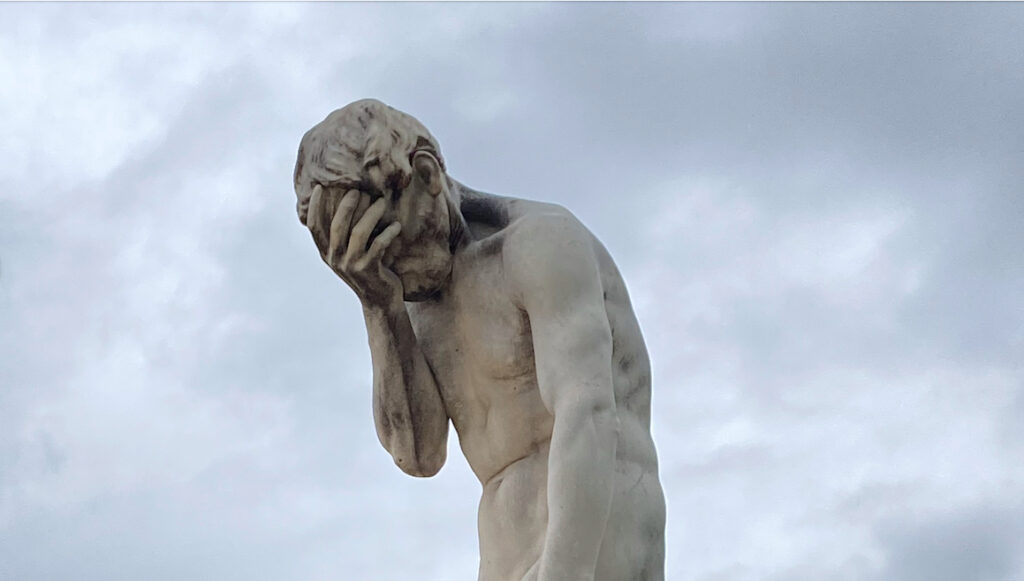
Henri Vidal, Caïn venant de tuer son frère Abel, 1896; Jardin des Tuileries, Paris. Photo: mine. Please do not reproduce without express written permission.
Another layer of challenge comes in recognizing and dealing with abuses of power; questions arise as to how certain artists should be viewed, engaged with, and/or covered in light of exposure of such abuse. Earlier this summer it was reported that American painter Kehinde Wiley, facing multiple allegations of sexual assault, had several upcoming shows cancelled. The National Coalition Against Censorship released a statement in June, one subsequently answered by statements from accusers. (“Kehinde Wiley’s Accusers Respond to Concerns Over Canceled Museum Shows“, Valentina Di Liscia & Maya Pontone, Hyperallergic, June 27, 2024) The recent (semi)fall of the mighty (i.e. François-Xavier Roth and John Eliot Gardiner) notwithstanding– one wonders at the role of context in such cases: how does specific knowledge of artists’ behaviours impact enjoyment/understanding/appreciation of their art? What responsibility do organizations bear in presenting their work? Who decides what is contentious? What responsibility exists to past/present victims? Should there be any? What is the role of sensitivity? Who benefits? Who pays? That last one is especially important, in both literal and figurative senses, and can serve to create (and feed) a toxic brand of resentment.
In an individual sense, one wonders at the vast and largely invisible network who help to power the art world, those who endure abuse and ensconce others within their positions of privilege that perpetuate abusive practices. A fascinating piece posted at Hyperallergic last month explores this question within a socio-historical context, examining the many unknown scribes who were responsible for the first transcriptions of biblical text. Writer Sarah E. Bond opens her historically detailed article with a brilliant distillation of the “lone genius” image that powers perceptions of culture, even now:
Art and literature work in tandem to fortify myths of single-handed brilliance, creating a reverence for the proverbial “solitary genius.” Romantic depictions of the ancient author toiling away at his desk or the medieval bishop writing letters while alone in his study reinforce and reinscribe the aesthetics of authorship as a lonely, inspired endeavor. In truth, these are far from authentic depictions of true authorship.
(“The Enslaved People Who Wrote Down the New Testament“, Sarah E. Bond, Hyperallergic, July 28, 2024)
Conductor Hannu Lintu recognized his assistant, James S. Kahane, ahead of the opening of Bayerische Staatsoper production of Pelléas et Mélisande last month. More of this please, classical/opera world!
And less of this (way less – stamp this kind of thing out entirely, please): it was recently revealed that any artist working in Russia must adhere to the country’s new cultural policy, one tied to promoting/glorifying the war in Ukraine if they want any form of funding whatsoever. (“‘Everything from love to heroic death’: The Kremlin’s new cultural policy puts the war against Ukraine front and center in Russian art“, Meduza, July 24, 2024). The country’s recent prisoner exchange with the U.S., which saw the releases of Vladimir Kara-Murza, Ilya Yashin, Sasha Skochilenko, Oleg Orlov, and Evan Gershkovitch among others, seems particularly poignant given that immediate artists will be basically unable to explore the lives of these figures in any meaningful sense throughout creative media – unless a distinctly pro-Kremlin narrative is taken, that is. Many of the works being presented and performed by exiles now are filled with rage, and with good reason.
Rage, of course, can sometimes feel like the outer shell of grief. This year’s edition of the Edinburgh Festival features three works which deal with various aspects of grief. (“‘We want it to feel like a wake’: the Edinburgh Fringe artists exploring grief on stage“, Natasha Tripney, The Stage, July 29, 2024). Kelly Jones’ semi-autobiographical play My Mother’s Funeral: The Show, explores issues of class, grief, and privilege, while Look After Your Knees, created by Natalie Bellingham and director/performance-maker Jamie Wood, explores the difficulties following the death of a close relative – in this case, Bellingham’s mother. “My mum took up quite a lot of space in my life,” she says in the feature. Reading this I was reminded of the words of conductor Giordano Bellincampi in our conversation last year, when he was preparing to lead the Auckland Philharmonia Orchestra (APO) in a concert presentation of Korngold’s Die Tote Stadt. “We have a lot of operas about death – in the sense of revenge and power,” he said at the time, “but we don’t have many about grief, how it is when people actually die.” Bellincampi will be leading the APO in a concert presentation of Tristan und Isolde on August 10th directed by Frances Moore, with Simon O’Neill and Ricarda Merbeth in the respective title roles, together with Albert Dohmen as King Marke, Katarina Karnéus as Brangäne, John Reuter as Kurwenal, and Jared Holt as Melot.
Speaking of teamwork: the fourth season of Prime series The Boys recently concluded. I wrote about the series’ literary-operatic corollaries in 2022, and it was interesting to read Inkoo Kang’s essay in The New Yorker earlier this summer (“‘The Boys’ Gets Too Close For Comfort”, June 26, 2024). Taking a less artsy if decidedly timely approach, Koo underlines the show’s embrace of a more blatant political commentary via the character of Homelander (who, for all the superhero trappings, is alarming familiar) and, along with noting how such embrace has risked turning off longtime fans, makes a salient point: “Even as (showrunner Eric) Kripke delights in the gruesome and the absurd, he advances a question that too few actual political actors seem to have asked themselves: How many norms and institutions are they willing to destroy in order to “win”?” A Faustian question indeed, and also a very operatic one.
Finally: the UEFA European Championship has wrapped up for another season – I watched the final with an unseen but very-heard audience of many windows-open neighbours. Shrieking with unseen strangers on a summer night: fun! Throughout the game my mind kept returning to this, captured on the very first weekend of the Championships in Hamburg; the voices, the coordination, the props, the theatre, the design, the choreography: … soc-opera?
Until September: read, listen, walk, think, smile… and remember the c-word. 🙂
Top photo: the curtain of the original Komische Oper Berlin (Behrenstrs. 55-57), 2017; my photo; please do not reproduce without express written permission.
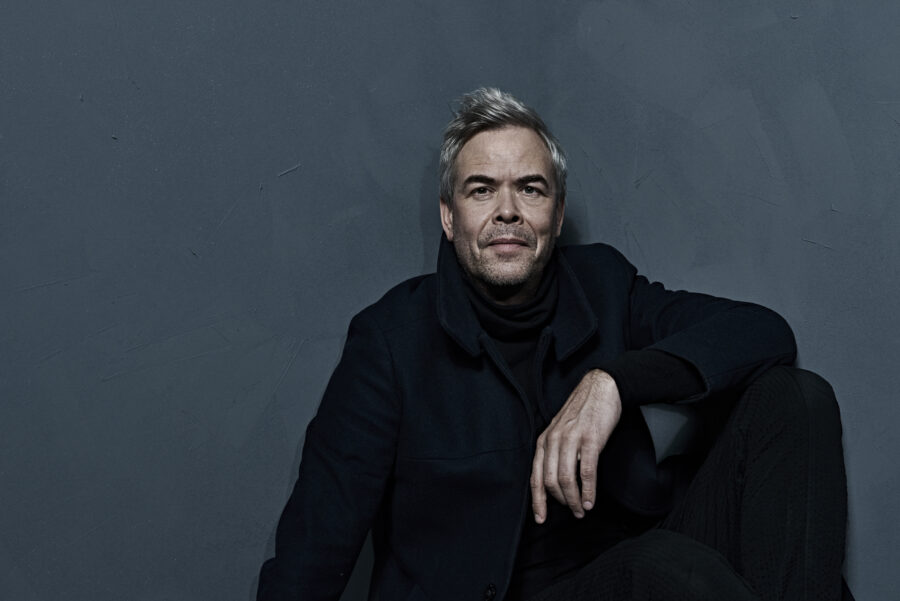
Pelléas et Mélisande is an opera that inspires automatic if not always well-founded ideas: it’s (seemingly) impenetrable; it’s the French Tristan und Isolde; it’s romantic; it’s intense; it’s ultimately very tragic. It is also, in the words of conductor Hannu Lintu, something people may find “baffling.”
Yet Lintu, who is currently leading a new production of the opera with Bayerische Staatsoper in Munich, has found a unique clarity in Debussy’s 1902 opera, itself based on Maurice Maeterlinck’s 1893 symbolist play of the same name about a tragic love triangle of two half-brothers who love the same woman. Dutch director Jetske Mijnssen’s new staging premiered earlier this month as part of the annual Münchner Opernfestspiele, a co-production with The Dallas Opera running through 22 July featuring Ben Bliss and Sabine Devieilhe as the doomed titular lovers, along with Christian Gerhaher as the jealous Golaud, Sophie Koch as Geneviève, and Franz-Josef Selig as Arkel. Lintu, who is also Chief Conductor of Finnish National Opera, emphasizes the work’s episodic structure and uses its orchestral interludes not merely as time-filling transitions but as both commentary and complementary characters on and within the unfolding narrative. This musical approach serves to heighten the dramatic interplay between characters as well as underline the extreme tension of their world – its mystery, mysticism, and narrative momentum. Set and costume designer Ben Baur has created a world that channels both the time of the opera’s premiere (the early 20th century) while adding abstract elements and making substantial use of water, which becomes a visual motive. The decidedly structured approach Lintu takes to the score is intriguingly complemented and contrasted by such textured visual cues, highlighting both the form and the formlessness that awkwardly co-exist and fight for dominance via the interwoven relationships within the opera.
Along with his duties at Finnish National Opera, Lintu is also Music Director of Orquestra Gulbenkian in Portugal, and will become artistic partner of the Lahti Symphony Orchestra in Finland in autumn 2025. He has lead a number of celebrated orchestras including the New York Philharmonic, Deutsches Symphonie-Orchester Berlin, the Bavarian Radio Symphony Orchestra, the BBC Symphony Orchestra, the Royal Liverpool Philharmonic Orchestra, Orchestre Symphonique de Montréal and Orchestre National de Radio France, to name a few. Lintu’s varied repertoire features an intriguing mix of old and new, with a distinct focus on the latter; the works of contemporary or near-contemporary composers (Magnus Lindberg, Thomas Larcher, Sebastian Fagerlund, Kaija Saariaho) feature prominently along with an assortment of 20th century works by Lutoslawski, Berio, Zimmerman, and Messiaen, with recordings done for Ondine, BIS, Naxos, Avie and Hyperion. A 2012 recording of George Enescu’s Second Symphony (Ondine) with Lintu leading the Tampere Philharmonic Orchestra was shortlisted for a Gramophone Award, one of many nominations the conductor has received from the prestigious music magazine, and one of many outlets who have praised and recognized his wide-ranging work; Lintu is multiple GRAMMY nominee who is also the recipient of two International Classical Music Awards.
In his native Finland, Lintu has lead a range of operatic works including Wozzeck, Ariadne auf Naxos, Don Giovanni, Dialogues des Carmelites, Turandot, Salome, and Billy Budd. Earlier this year he completed the house’s massive Wagner Ring Cycle with Götterdämmerung, having already lead performances of Die Walküre and Siegfried from 2022. Music writer Anna Aalto noted in June that “(u)nder his direction, the orchestra’s sound is rich and velvety, and the details of the music are thoughtful and intense. The brass section stands out as mesmerizing and well-balanced.” (Seen & Heard International, June 6, 2024) This attention to balance is just as noticeable in his Pelléas in Munich. Lintu and I spoke about achieving that balance, along with his history with the opera, the role of language, and his ideas on the notion of “colour”, a word important to the music of Debussy, and not always easily achieved. Our conversation took place two days after the production’s opening, with the conductor offering detailed musical reflections, highlighting the work’s inherent connections to its contemporaries as well as its inherent mystery and beauty.
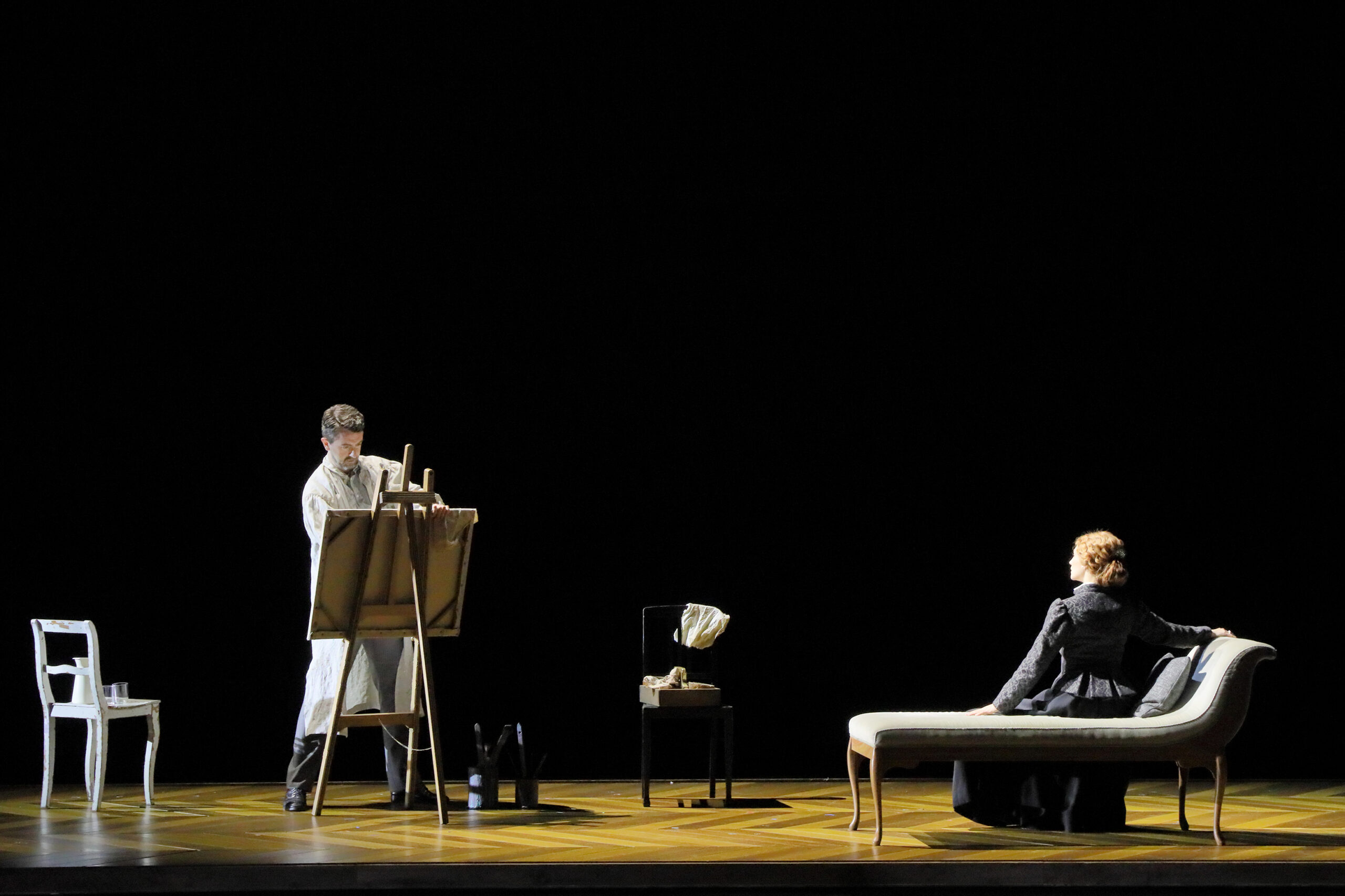
Ben Bliss as Pelléas and Sabine Devieilhe as Mélisande in Bayerische Staatsoper’s new production of Debussy’s opera. Photo: Wilfried Hoesl
When did you first encounter Pelléas? And how have your perceptions changed since that time?
The history is long – I remember when I was still in high school and I was playing piano and cello. I always went to a local music library, which was huge, and I remember borrowing the score of Pelléas and and trying to read it and realizing that I couldn’t understand a single measure of it. I was probably 16 or 17 and I had already been playing Debussy’s preludes and things like that, but I had the feeling that (the opera) was some kind of thick forest which I could not penetrate or even step into. But I was listening to it a lot with the score when I was young.
Then I started to study conducting – I became very symphony-focused – though I saw a couple of productions at various points and then bought the score because I thought, ah, that it’s one of those pieces of the 20th century that I really need to know! My approach then wasn’t for performance but purely for analysis. I bought the play also, the Finnish translation, and read it a couple of times, and I knew a bit of the philosophy in its background, although I always found, as a whole, it was difficult to digest as a musician; it takes time before this work gets into your system. I could see the details but I couldn’t put them together, a problem throughout much of Debussy’s music: it’s made up of so many details and so many layers, hidden meanings without an actual horizontal line – well it is horizontal, but not in the melodic way, it’s mostly it’s vertical, with many fascinating things going on with the harmonies and the middle voices. So I was lost in the forest, metaphorically, in a different way – but now I could actually penetrate that forest.
In preparing for this production I started to work on two different levels: studying the score as if it were a symphonic poem of some kind, and reading the text. I’m not a French speaker and I knew that I would be working with these fantastic singers who, all except one, speak French – and I have done some French operas, like Carmen, Dialogues des Carmelites, but Pelléas is a very different approach to the French language. When I came to Munich and met the soloists for the first time I said, “Look, you have all done this” – except Christian Gerhaher, who had sung Pelléas before, not Golaud – “but you have done this and I have not.” It was actually a fascinating situation. I said, “I am now approaching you, actually not with a solution, but with questions.” This was my attitude during the whole rehearsal process: I wanted to learn from them.
When the orchestra came in I tried to combine the German orchestra sound and my own orchestra sound into something which I think might be a little bit French. It’s been a very complex and joyful process at the same time. It’s fascinating to think about all the ways music goes into musicians’ brains, and then of course how it comes out, because it’s not only just getting it into your system, but it’s also technical: how does this music enter into my technique? And how am I able to transmit my ideas to the musicians?
I want to pick up on one of those ideas; you said in a Staatsoper video interview that Debussy should be “in shape”– I could hear that structure at the premiere. Did this arise through that study or was it something that came with rehearsals and being around singers?
Well, at some point the themes became more familiar, and they clarified especially when I started to see what was about to happen on stage – when I saw the movement. For me movement is really important; I play with it. I need to see people moving when I conduct opera, because that gives me a goal. Each scene in Pelléas has its own musical shape; each one of them is a musical piece as such, which could be performed separately, almost sometimes in some kind of a form, not necessarily a classical form, but maybe a form which comes from, even from earlier times – Renaissance or Baroque. Each scene has its own arc. The only piece that comes to my mind here is Wozzeck, which is built in the same way; each scene has its own musical form. But for Debussy it was more, I think, subconscious in the way he created Pelléas.
At some point during the rehearsals I tried to play each piece, each scene, as if it were the only one, standing on its own feet. And then later when the orchestra came along, I tried to connect these forms. How the story develops is actually very strange because so little happens in the beginning. When the first act ends, I always have this feeling like, “Where is this going?”
… which is very symbolist…
Yes! And these symbols say a lot about the time in which the opera was written, in 1902. I remember when I read the play for the first time, those symbols were a little bit more touching and I have a feeling that Debussy lost part of the symbolist nature of the play because he was so involved with the vocal writing and the orchestration – I might be wrong! The form is there, then it develops, eventually into disaster, but then it doesn’t end – there’s one more act, which is almost half an hour, like a kind of epilogue. The question arises: why did Debussy take it there? Maybe he wanted to create another world. The structure of that final section is entirely different than the others. The whole opera is episodic, and I wanted to show that this epilogue is commenting on what has happened before.
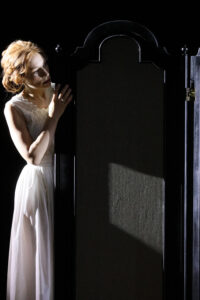
Sabine Devieilhe as Mélisande in Bayerische Staatsoper’s new production of Debussy’s opera. Photo: Wilfried Hoesl
I suspect the epilogue is also a commentary on the nature of inherited trauma…
You could be right.
… the musical language has a sense of doom. Regarding that language, I wonder how much of your other work, particularly that of Messiaen, Berio, Enescu, and of course Kaija Saariaho, was in your head when you were going through the score.
It wasn’t consciously doing that, but now that you say it, there’s lots of Kaija’s music, especially in that fifth act of Pelléas. As to Messiaen, I just conducted some early works of his, and they are very Debussy-like in the language – so I think that’s where his harmonies grew from, although it’s organized as an instrument, of course, and turns the musical language to another direction.
You can approach Pelléas from two different sides: from the past, which would include Wagner and probably some French composers before Debussy; and then of course, what came afterwards. I think Debussy is one of those composers we all know was incredibly influential in terms of what’s happened in the 20th century – him, Stravinsky, Webern, and all these great masters from the beginning of the 20th century. Their works are still modern. We probably need to live a couple of hundred years more before we really understand their music. I was thinking about this other night – we pretend that we do (understand), but especially with regards to Debussy, except for La Mer, people are a bit baffled. “What is happening? I don’t get it. I’m getting a little bit intimidated” – whereas the musicians are like, “Oh, this is so beautiful!” Debussy’s music hasn’t entirely reached the ordinary public, but it is going to – it is still travelling towards us.
Or us toward it…
Yes.
Do you think that the journey for appreciating Debussy might be helped along by programming more contemporary, or at least complementary composers more often?
I have always believed in showing the connections, whether it’s the connection between Beethoven, Wagner, or Mahler, or Mahler and Berg. I understand that the people who come to concerts may not have time, knowledge, or interest in educating themselves in this way. But I think we, who plan the programs and do the programming, could take a little more responsibility and gradually show them that the history of music is continuous, and that’s how the so-called canon is built. And those composers who are important, they are important because they influenced others, not because some musicologists or musicians have decided that they are or must be the greatest. They would have been great anyway, because they affected so many other composers. I think of Kaija and I know that some of her ideas, yes, came from Debussy and some of them came from Messiaen, and some came from others.
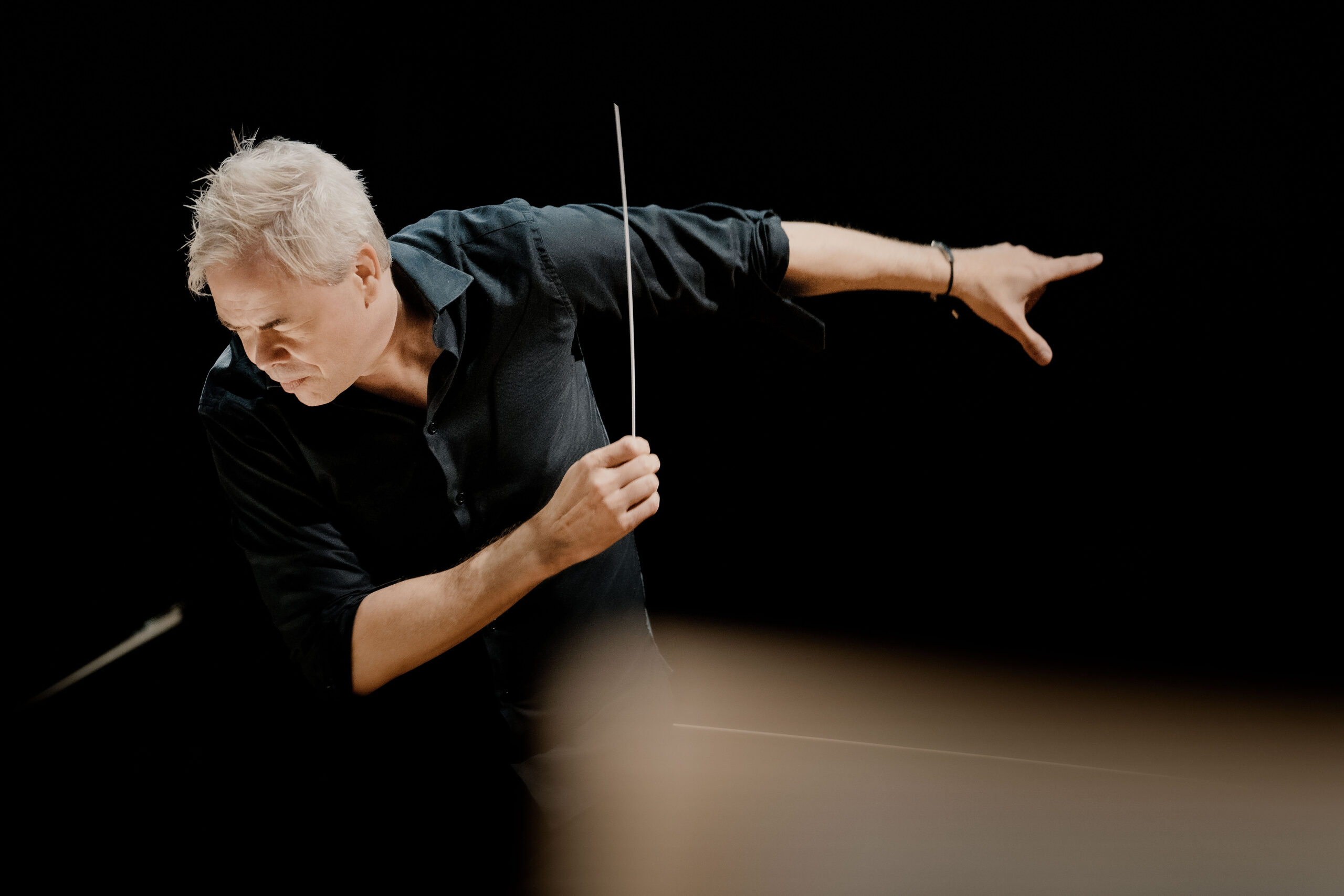
Photo: Marco Borggreve
So what kinds of things do you carry back, then, from this experience? You’re not finished the run yet, but what ideas or approaches might you carry back to the Finnish National Opera?
I don’t know yet, but certainly, whenever you do a big piece like this, which is, again, if we are talking about the 20th century, if we’re talking about Salome, Elektra, Wozzeck, these pieces which every conductor wants to do, you think of the structure. If something has changed, I’m not sure what it is yet. I’m almost sure that if I have changed, I will notice it after I have started to do something else. When the run here ends, I will be going on to Cleveland, Music Academy in the West, Tanglewood and Taipei also, doing the music of Sibelius, Walton, Mahler, Bruckner, and Saariaho… so when I get into the various pieces I’m set to do in those places, it’s possible that I will do them differently because of this experience – but I don’t know it yet, because now I’m still living Pelléas here.
“Colour” is a word used not only applied to the music of Debussy, but to that of many composers whose works you’ve done. Have your ideas on colour changed through the years?
We tend to speak of colours in music and very often we don’t actually have any idea what we are talking about. You read the critics: “Oh, there’s those wonderful colours” – but sometimes it’s just words. There are composers like Sibelius, who was incredibly synesthetic in his thinking, and he heard every key in its own colour, but then there is no direct connection from this into the score itself, how we experience it and how we play it, so I would say that colour is technique. It’s the composer’s technique to orchestrate, and then the musicians’ technical abilities to do exactly what the composer wanted to do. Debussy wrote a lot of instructions, as did Mahler and Bartok. You should read those instructions carefully. They knew words, and whenever there’s a word in the score, they are very important. But mainly colour is a very simple thing: play at the tip of the bow, or more pressure, or short, long, achieving a balance that reveals and makes those colours.
If you look at the orchestration of Pelléas, you very soon noticed that use of brass is very subtle; they very seldom play. A tuba plays probably four or five notes, and there are some beautiful trumpet melodies also, as well as various motives – I almost think that that’s something he learned from Wagner’s scores. It was actually something we worked on, the brass balance. So… yes, colour is technique, it’s orchestration, and then trying to do what the score says.

Christian Gerhaher as Golaud and Sophie Koch as Geneviève in Bayerische Staatsoper’s new production of Debussy’s Pelléas et Mélisande. Photo: Wilfried Hoesl
How do you think this plays into the vocal writing? You said in another interview that it’s very in the middle – have your ideas changed throughout rehearsals?
They have changed, but only within the last eight or nine days. Originally I thought – and I still think – that they are essentially instrumental parts with words. They are in the texture of the overall sound. They have their own character, and sometimes they are peculiar. It also took me some time before I realized that the French language needs to have certain rhythms, even more than other languages. Every language has its own character, but now when I really know the words (to Pelléas) better I realize that if I try to speak them, then the character comes through the spoken rhythm and its related spoken tempo.
Also if you listen Debussy for three-and-a-half hours you have to have some variation in the sound, it can’t always be just one sound, “French” or whatever; you really do need to be earthbound for this opera. You need to find the structure and maintain the intensity and momentum, and keep some sense of direction pushing it through. You listen to recordings of Pelléas and that all of that comes through, even if the recordings are very different from each other; I can’t tell you which one are the best ones, maybe I admire the ones which are more orchestra-focused – but yes, I always thought that I have to treat those vocal parts as instrumental parts, that I have to make the balance where the words are, that they need to come through somehow. And it’s not always possible. With every opera, you have to make some compromises in balance. And having a Dutch stage director, a Finnish conductor, a German orchestra, a French singer, a German singer – it is inevitable that we all have our own national characteristics when it comes to the music, but sometimes it yields fascinating results.
Top photo: Veikko Kähkönen



